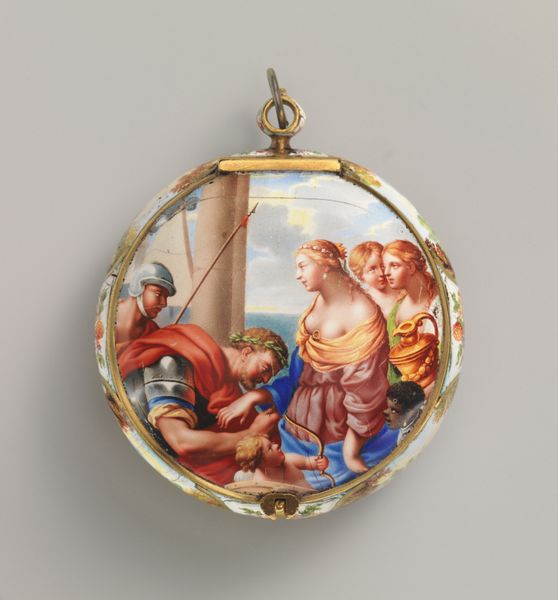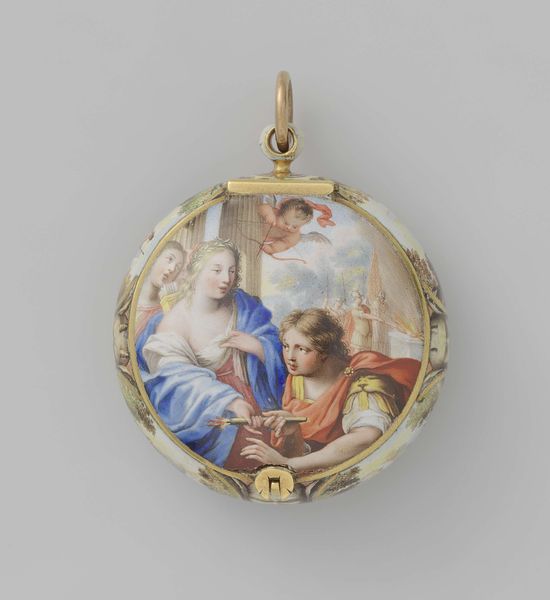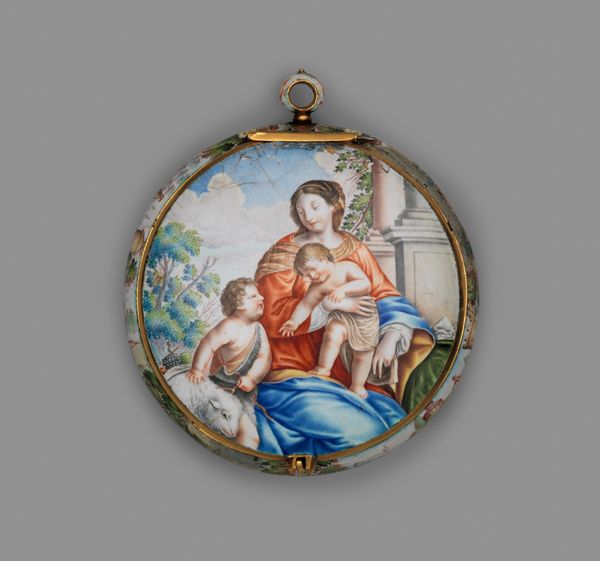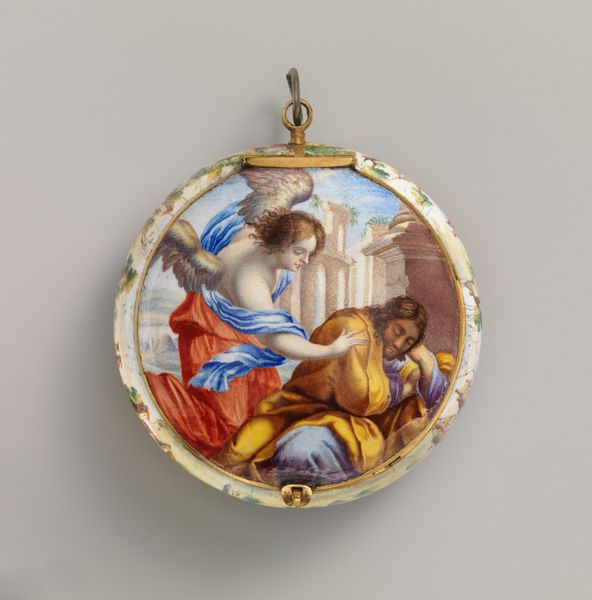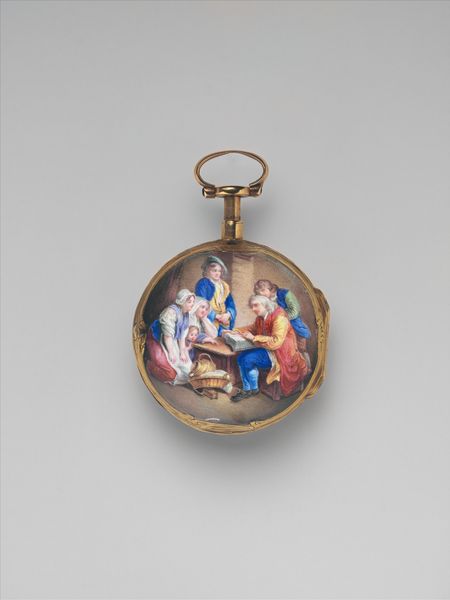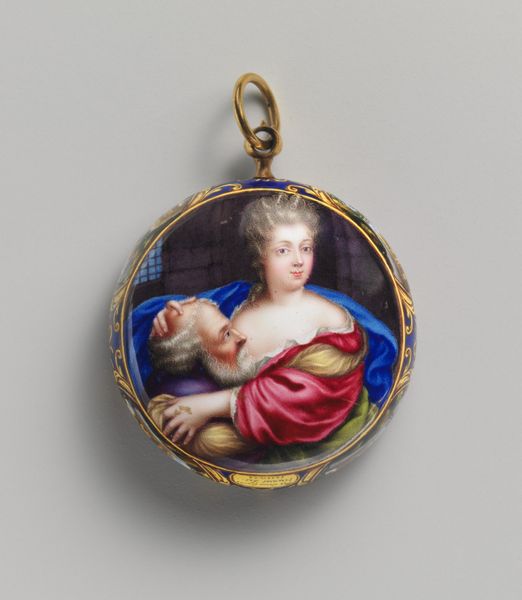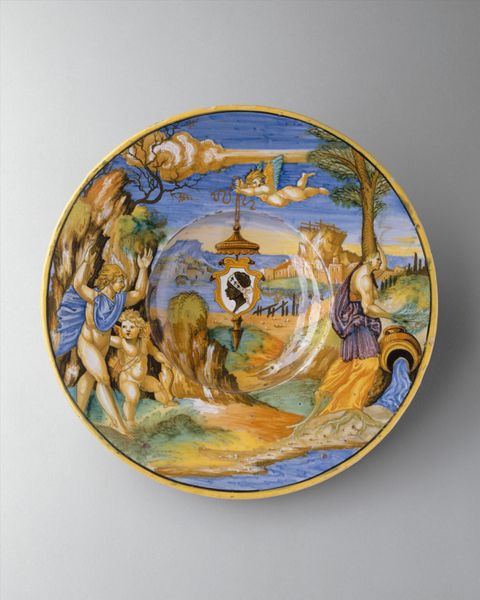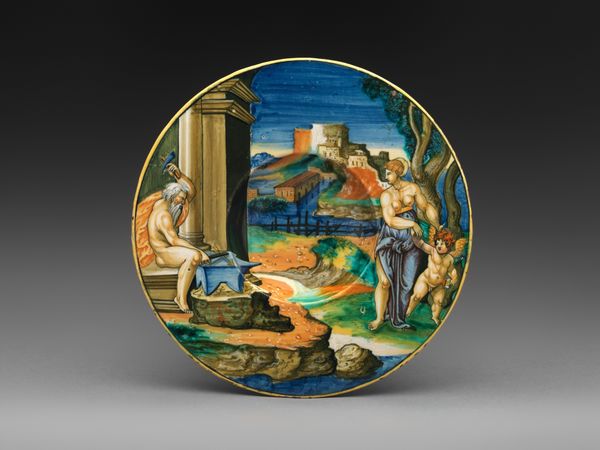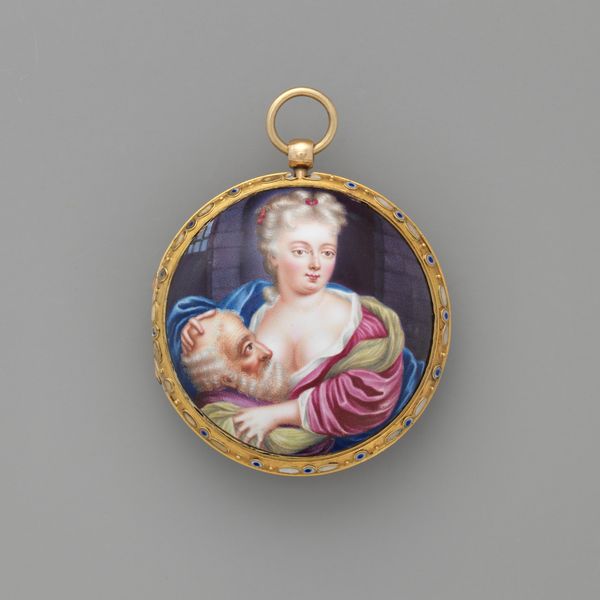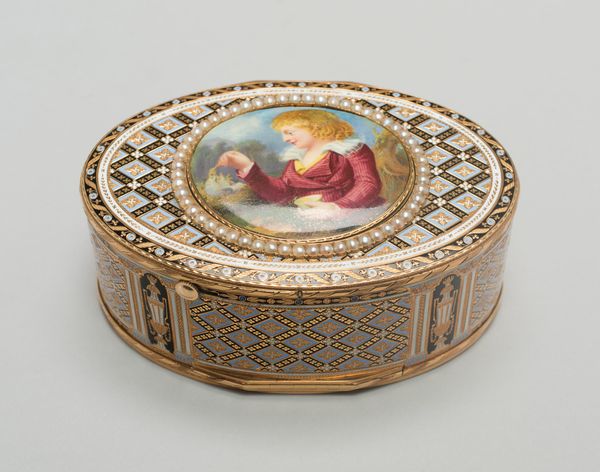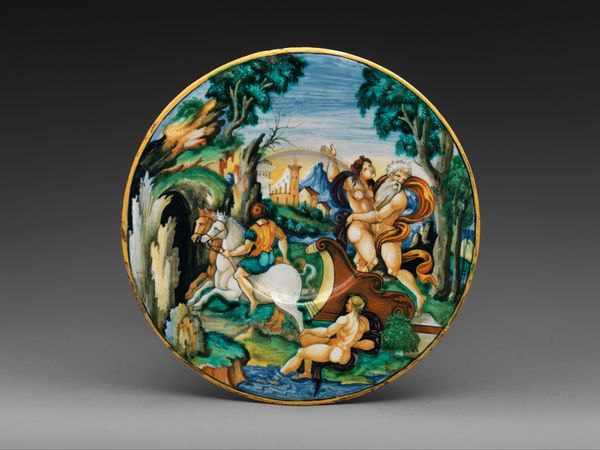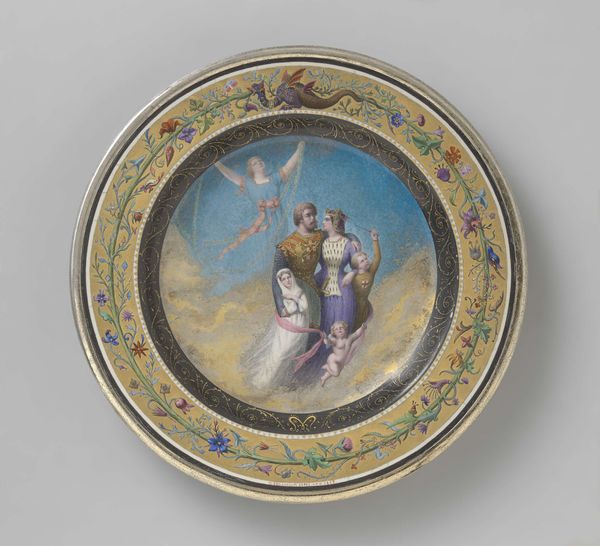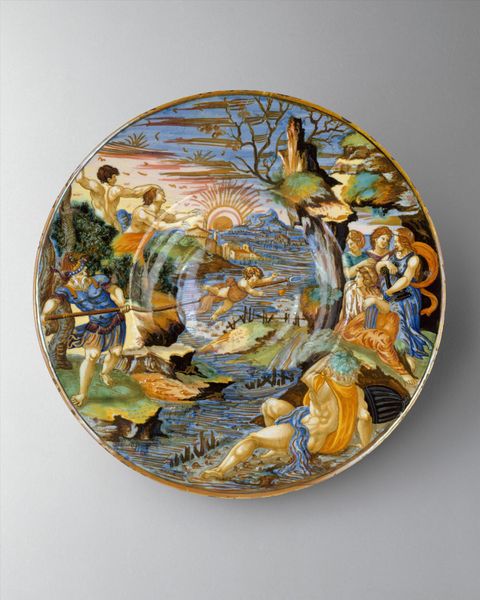
painting
#
baroque
#
painting
#
figuration
#
history-painting
#
miniature
Copyright: Rijks Museum: Open Domain
Curator: Welcome. We're looking at a beautiful pocket watch from around 1700, crafted by Mathias Rieppolt. Editor: What immediately strikes me is the juxtaposition of what seems classical subject matter, set within the intimate form of a wearable object. The colours, they’re vibrant and concentrated. Curator: Absolutely. The choice of enamel as the medium speaks volumes about the aspirations of its owner. Enamel work requires meticulous firing processes and costly materials. Having that skill on display marks wealth. Editor: You can't miss the idyllic figuration decorating the cover. We have women with babies alongside armed figures. It’s a narrative packed into such a compact design. Curator: Exactly! It brings up questions about the function of miniature art during that period. These were often commissions reflecting specific narratives which may have family or personal allegorical links. Editor: True, the miniature scale focuses one’s attention on the symbolic structure of this painting, too. Look at how carefully balanced and organised it all is, each part reflecting the whole. How are the bodies arranged in relation to each other, for instance? The shepherd gives some golden apple to one child while another clutches a red fabric, drawing together this scene into a formal balance that goes beyond just pretty colour schemes. Curator: The very existence of such an ornate and meticulously crafted watch hints at the social complexities. These aren't merely functional objects; they're powerful signals of status. I wonder where this was made and under what workshop conditions... and what implications its patronage reveals. Editor: It’s so rich! The way Rieppolt utilizes colour and composition, combined with the ornate decorations... the way all these formal aspects interact draws you to contemplate, even get lost in this scene despite the limited physical space that the watch affords it. Curator: The dialogue that the object provokes gives us an idea of baroque artistry but the dialogue surrounding class and production helps us understand how such trinkets were born. Editor: Indeed, and that balance, perhaps, shows its strength.
